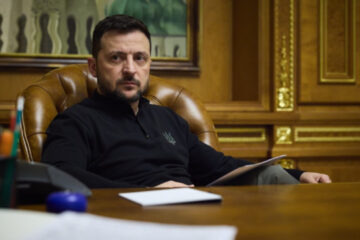Russian forces have resumed a more typical strike pattern in late March and early April 2025 after a temporary spike in the size of Russian long-range strike packages in mid-February and early March 2025.
The Institute for the Study of War (ISW) said this in its Russian offensive campaign assessment for April 12, according to Ukrinform.
Analysts note that Russian forces conducted notably larger strike packages in mid-February and early March 2025 but have launched strike packages more comparable to trends last observed in January and early February 2025, albeit using fewer missiles, in recent weeks. Russian forces notably conducted no strikes against Ukraine on April 7 – the day after conducting their largest strike in over a month on April 6 — but have since resumed daily strikes.
In addition, Russian forces have reportedly adjusted their long-range strike tactics in recent weeks, likely as part of an effort to inflict significant damage with strike packages of sizes similar to those they had been using earlier in the year and to intimidate Ukrainian civilians. Ukrainian sources and German outlet BILD reported in late March and early April 2025 that Russian forces are loitering long-range drones at high altitudes several kilometers from large Ukrainian cities and other targets before conducting synchronized strikes with multiple drones. Ukrainian sources reported that Russian forces are flying Shahed drones in the densest possible formations in order to overwhelm Ukrainian air defense systems and that Russian forces concentrate a group of 10 to 15 Shahed drones outside of a city before striking the city.
Ukrainian Air Force Spokesperson Colonel Yurii Ihnat reported on April 6 that Russian forces are constantly modernizing their Shahed drones, ballistic missiles, and strike tactics, complicating Ukrainian forces’ ability to shoot them down.
“Russian forces previously launched Shahed long-range drones in a series of waves against various targets each night, and this reported effort to operate drones in denser formations suggests that Russian forces believe this new tactic will overwhelm Ukrainian air defenses more effectively,” the report said.
Analysts also note that Russian officials have thus far refused to engage with or have outright rejected the U.S.-Ukrainian temporary ceasefire that U.S. Special Envoy for the Middle East Steve Witkoff presumably proposed to Vladimir Putin during a meeting on March 13.
“Russian forces are likely delaying negotiations on a general ceasefire in order to continue making gains along the frontline in Ukraine and continue devastating long-range strikes against Ukrainian defense industrial and civilian areas in order to intimidate civilians and undermine Ukraine’s ability to defend itself against future Russian aggression,” ISW analysts said.
Illustrative photo
Source: Russia has returned to its typical pattern of strikes against Ukraine – ISW




